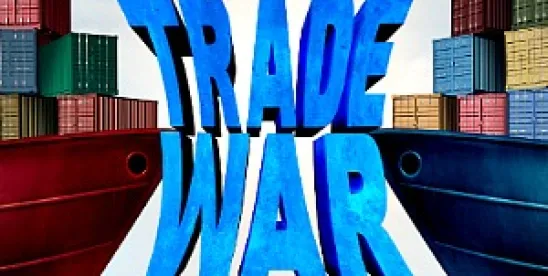Clearly, there is more going on these days in Washington, D.C. than just the impeachment hearings, and activities this week made that point clear. In the span of only a few days, we saw progress on two key issues – the China 301 tariffs and the U.S.-Mexico-Canada Agreement (USMCA).
First, we saw an indefinite suspension of the List 4B 15% China tariff which was to take effect on December 15, 2019. The President tweeted about it, saying “The 25% Tariffs will remain as is with 7 1/2% put on much of the remainder…” (see here for the full text) and USTR issued a press release (see here). Regretfully, neither is very clear, beyond stating the tariff on goods on List 4B is suspended indefinitely. CBP confirmed the suspension later in the day at CSMS 40984510. There was also a Fact Sheet issued by USTR (see here), but it, too, failed to clear up the tariff impact.
As everyone knows, there are multiple lists of goods subject to China tariffs: List 1 ($34 billion), 2 ($16 billion), 3 ($200 billion) and 4 (A & B combined = $300 billion). The reason there is confusion is because of the dollars being discussed. USTR’s press release states the 25% will remain on “approximately $250 billion” and the 7.5% will be imposed on about “$120 billion of Chinese goods.” 250 + 120 = 370, so, which goods remain impacted by which tariff? The popular guessing is the tariff on most of the goods on List 4A will drop from 15% to 7.5%, and the rest remain subject to the current 25% (Lists 1, 2 and 3) or 7.5%? 15%? (remaining goods on List 4A), but frankly, all we can do is guess, until we see something more concrete from USTR. Dated Friday, USTR also issued a “Notice of Modification” which confirms the 15% tariff on the List 4B (or Annex C) goods has been “suspended indefinitely” and announces that more updates will be issued. Presumably, these later notices which clarify the impact of the Phase One deal on the remaining goods.
To everyone’s relief, there is finally movement to mitigate the impact of the China tariffs through this new deal. The USTR Fact Sheet talks about reforms regarding intellectual property, technology transfer, agriculture, financial services, currency, expanding trade and dispute resolution. For example, regarding intellectual property, supposedly “longstanding” concerns about trade secrets, pharmaceutical-related intellectual property, geographical indications, trademarks and enforcement against pirated and counterfeit goods are being addressed. Additionally, the Fact Sheet states that “unfair technology transfer” practices are being addressed with “binding and enforceable obligations.” The Fact Sheet goes on to state that forced technology transfer and other practices will cease, as will efforts to “acquir[e] foreign technology pursuant to industrial plans that create distortion.”
Structural barriers to trade are supposedly going to be struck, along with a “dramatic” expansion of U.S. food, agriculture and seafood product exports. Non-tariff barriers are said to have also been addressed, including for “meat, poultry seafood, rice, dairy, infant formula, horticultural products, animal feed and feed additives, pet food, and production of agriculture biotechnology.”
Barriers regarding financial services are said to have also been addressed, along with “unfair” currency practices. The general press is already covering the supposed $50 billion in American agricultural products China has agreed to purchase. Finally, there is a summary about dispute resolution which asserts that bilateral consultations and strong procedures will now be in place to allow “each party to take proportionate responsive actions that it deems appropriate.”
While the comments in the summary look promising, as is always the case, the devil is in the details, and those will only be known once the text of the agreement is unveiled. The popular expectation is the signing will occur sometime in January.
As to the USMCA, the fact the agreement is headed towards approval by the House is good sign. Approval in the Senate has always been assumed; although assuming anything in D.C. these days, as we all know, can be a gamble! The reason movement is seen as a good sign is approval of the USMCA will provide some degree of predictability when it comes to trade between the U.S., Canada and Mexico.
The final text of the agreement was released by USTR (see here). House Ways and Means issued its own Fact Sheet, see here. USTR has previously commented here. Commerce/ITA coverage can be found here and might be of particular interest since there are links to State Fact Sheets, as they are called. Departing from the position papers of government entities, there is the coalition of trade associations which has supported passage of the USMCA whose materials can be found here.
It is also worth keeping in mind the filing of exclusion requests for goods on List 4A remains open until January 31, 2020 (see here).
It may be the end of the year, but the times are anything but quiet, and it looks like the beginning of next year will continue the pace. There is no telling at this time whether the USMCA will get approved in 2019 or 2020. There is also the U.S.-Japan trade agreement which has been negotiated but is yet to be approved. That text can be found here: US-Japan Trade Agreement. With the result of last week’s election in the U.K., Brexit is now on the road to the U.K. withdrawing from the EU on or before the January 31, 2020 deadline. As such, a U.S.-U.K. trade agreement is not far behind. There are export license reforms regarding artificial intelligence and other cutting edge technology under discussion. Changes to the Customs-Trade Partnership Against Terrorism are going to be published soon, causing the CTPAT portal to be suspended between January 1, 2020 and June 1, 2020 so it can be reprogrammed to reflect the new program requirements. There is the FMC petition regarding demurrage still pending, as well as GSP changes, and the Miscellaneous Tariff Bill. And if all of that is not enough, there are always the topics of cybersecurity and blockchain!
No doubt more is coming. To rephrase a classic line: strap in – it’s going to continue to be a bumpy ride!




 />i
/>i
